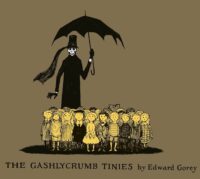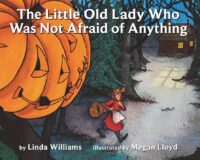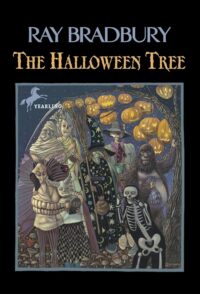Big Questions for Brave Thinkers
Ready for some frightfully fun conversations with your students? The Scary Good Stories collection from the Prindle Institute’s Teaching Children Philosophy library brings big ethical questions to life through stories that delight, unsettle, and spark curiosity. Perfect for October—or anytime you want to explore courage, fear, and imagination—these discussion guides help young thinkers dig into what it means to face the dark, together.
About the Collection
Our K–5 collection features classics that mix chills with charm. In Stephen King’s Hansel and Gretel, the familiar fairy tale takes a darker turn, prompting readers to think about temptation, trust, and survival. Edward Gorey’s The Gashlycrumb Tinies turns the alphabet into a gleefully morbid rhyme about childhood and mortality—inviting lighthearted conversations about humor, fear, and what makes something “too dark” to laugh at. And Linda Williams’ The Little Old Lady Who Was Not Afraid of Anything encourages bravery and resilience as one unflappable heroine learns to turn fear into friendship.
For middle-grade readers, our 6–8 collection turns up the intensity. Jon Klassen’s The Skull tells a hauntingly quiet tale about a girl who befriends a lonely skull in an abandoned house—raising thoughtful questions about companionship, courage, and facing what frightens us. And in Ray Bradbury’s The Halloween Tree, a group of friends journeys through time and across cultures to discover the meaning of Halloween itself, exploring life, death, and what binds us all together.
Each story is paired with a ready-to-use discussion guide to help teachers and caregivers spark meaningful conversations about fear, morality, and imagination. Explore the collection below—if you dare.
Hansel and Gretel

Stephen King’s retelling of the Brothers Grimm classic transforms a simple fairy tale into a haunting moral fable about hunger, greed, and the human will to survive. With his trademark suspense and dark humor, King invites readers to confront the choices that desperation can force—and to ask whether goodness can endure in a world built on fear. This eerie reimagining challenges young thinkers to consider what makes evil tempting, what makes courage possible, and why stories about danger still draw us in.
Get the guideThe Gashlycrumb Tinies

In Edward Gorey’s deliciously macabre alphabet book, twenty-six unfortunate children meet twenty-six spectacularly grim ends—all told in rhyming couplets and deadpan wit. Beneath the morbid humor and intricate pen-and-ink drawings lies a fascinating puzzle: why do we find delight in something so dark? Through laughter and discomfort alike, The Gashlycrumb Tinies encourages reflection on how humor shapes our understanding of fear, tragedy, and empathy—and what it means to find beauty in the bizarre.
Get the guideThe Little Old Lady Who Was Not Afraid of Anything

One dark and windy night, an old lady hears something following her through the woods—something that goes clomp, clomp and shake, shake! But rather than run away, she meets her fears head-on with wit and confidence. Linda Williams’ beloved story celebrates courage, creativity, and the power of curiosity over panic. It’s a perfect springboard for classroom conversations about bravery, resilience, and how we can turn what scares us into something that helps us grow.
Get the guideThe Skull

Jon Klassen’s beautifully unsettling tale follows a runaway girl who stumbles upon an abandoned house—and a talking skull who lives there. As the two form an unlikely friendship, the story unfolds into a meditation on companionship, mortality, and what it means to protect one another. Blending quiet tension with warmth and humor, The Skull invites middle-grade readers to consider how fear and kindness often share the same space, and how facing the unknown can lead to unexpected understanding.
Get the guideThe Halloween Tree

Ray Bradbury’s classic adventure whisks a group of friends through time and across cultures on Halloween night, as they uncover the ancient origins of the holiday—and the mysteries of life and death themselves. Guided by the enigmatic Mr. Moundshroud, the children witness the rituals, fears, and hopes that have shaped human celebrations of the afterlife. The Halloween Tree is both spooky and profound, reminding readers that even in the darkest stories, we find lessons about memory, friendship, and what it means to be alive.
Get the guide



